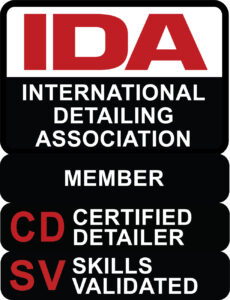
Welcome to our comprehensive guide on how to effectively remove ceramic coating from your car. As experts in the field of car care, we understand the importance of maintaining and rejuvenating your vehicle’s appearance. Whether you’re preparing for a fresh application of ceramic coating or looking to try a different coating, proper removal is crucial for optimal results. In this guide, we will walk you through the step-by-step process to ensure a successful and safe removal of ceramic coating from your car’s surface.
Section 1: Gathering the Necessary Tools
Before embarking on the ceramic coating removal process, it’s essential to have the right tools at your disposal. Here are the tools you’ll need:
- Isopropyl Alcohol (IPA): This will serve as your primary cleaning agent.
- Microfiber Towels: Soft and lint-free microfiber towels are perfect for wiping off the coating.
- Clay Bar: A clay bar helps remove any remaining contaminants and provides a smooth surface for reapplication.
- Polishing Compound: If needed, a light abrasive polishing compound can be used to remove stubborn coating remnants.
- Dual Action Polisher: Optional but recommended for large surface areas or deep scratches.
- Protective Gloves: It’s important to wear gloves to protect your hands from chemicals and potential scratches.
Section 2: Preparing Your Vehicle
Step 1: Wash Your Car Thoroughly
Begin by washing your car with a gentle car shampoo to remove any dirt or debris from the surface. Rinse it thoroughly and dry the vehicle completely using a microfiber towel.
Step 2: Ensure Proper Ventilation
Perform the coating removal process in a well-ventilated area or preferably outdoors. This will help disperse any fumes that may arise during the process.
Section 3: Removing Ceramic Coating
Step 1: Apply Isopropyl Alcohol (IPA)
Dampen a microfiber towel with isopropyl alcohol (IPA) and gently wipe the coated surface in a circular motion. IPA effectively breaks down the ceramic coating, making it easier to remove. Ensure complete coverage of the coated areas.
Step 2: Repeat the IPA Application
For thorough removal, repeat the IPA application process multiple times, focusing on one section at a time. This ensures that all traces of the ceramic coating are effectively broken down.
Step 3: Clay Bar Treatment
Once the ceramic coating has been sufficiently broken down, use a clay bar lubricated with a clay lubricant or soapy water to remove any remaining contaminants or residue. Gently glide the clay bar over the surface, ensuring even coverage.
Step 4: Polishing Compound (if needed)
If there are stubborn remnants of ceramic coating or minor scratches, a light abrasive polishing compound can be used. Apply a small amount to a polishing pad attached to a dual-action polisher. Work the compound in a circular motion, gradually increasing pressure until the desired results are achieved.
Step 5: Final Cleaning
After completing the coating removal process, thoroughly clean the car’s surface using a gentle car shampoo and rinse it off. Dry the vehicle with a microfiber towel, ensuring there is no residue left behind.
Section 4: Post-Removal Options
Once the ceramic coating has been successfully removed, you have several options to consider for your car’s surface:
- Reapplication of Ceramic Coating: If you plan to reapply a new layer of ceramic coating, it’s crucial to ensure the surface is clean, smooth, and free from any residues. Follow the manufacturer’s instructions for application, and take advantage of the clean surface to achieve optimal results.
- Alternative Coating Options: If you’re looking to try a different type of coating, such as a graphene or quartz coating, the post-removal stage is an ideal time to explore these options. Research and choose a coating that suits your preferences and follow the specific instructions provided by the manufacturer.
- Waxing: Applying a high-quality carnauba wax or sealant can provide temporary protection and enhance the gloss of your vehicle’s paint. Ensure the surface is completely clean before applying the wax using a foam applicator pad. Follow the manufacturer’s instructions for application and curing time.
- Paint Correction: If you notice any imperfections, swirl marks, or scratches on your car’s paint after the coating removal process, consider performing paint correction. This process involves using a dual-action polisher, suitable polishing compounds, and polishing pads to restore the paint’s clarity and remove any blemishes. Be sure to research proper techniques or consult a professional to avoid causing further damage.
- Regular Maintenance: Regardless of whether you choose to reapply a coating or opt for an alternative protection method, maintaining your car’s appearance is crucial. Regular washing, drying, and application of protective products will help prolong the life of your vehicle’s finish and keep it looking its best.
In conclusion, properly removing ceramic coating from your car’s surface is an essential step to achieve optimal results when reapplying or exploring alternative coating options. By following the step-by-step guide provided in this article, you can ensure a thorough and effective removal process. Remember to gather the necessary tools, prepare your vehicle, and follow the recommended techniques, such as using isopropyl alcohol (IPA), clay bar treatment, and polishing if needed. After the coating has been successfully removed, consider your options for reapplication, alternative coatings, waxing, paint correction, or regular maintenance to keep your car looking its best.
Related article: How to Remove Water Spots from Your Ceramic Coated Car


